Azores seismic deployment to monitor "seismic swarm". Blog by Dr Will Sturgeon
2 September 2022
The Azores are home to intense seismic and volcanic activity. In March 2022, the island of São Jorge saw extraordinary levels of seismicity. As part of the NERC emergency grant our team undertook an expedition to deploy 10 seismometers to monitor these activities.
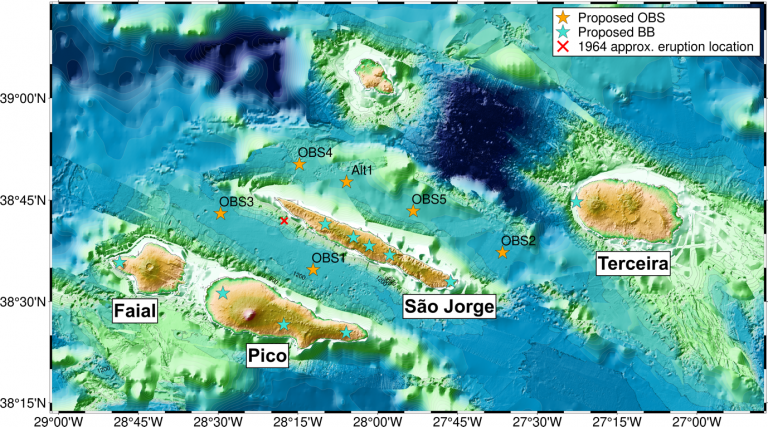
Protruding from the central Atlantic Ocean, about 1,400 km west of Lisbon, is an archipelago of nine volcanic islands, known as the Azores. Also described as “Europe’s Hawaii”, the islands host crater lakes, dry calderas, fumaroles and thermal water springs, forming the basis of a very special place. The North American, Eurasian and African plates meet at the Azores, forming the Azores Triple Junction. Owing to this environment, the Azores are home to intense seismic and volcanic activity.
On 19th March 2022, the island of São Jorge saw extraordinary levels of seismicity, whilst only five events were recorded between 1st January-18th March 2022, more than 29,000 M2-3.3 events were recorded from March 19th to May 2022. This “seismic swarm” is reason for concern for the local Azorians, who hope history won’t repeat itself. The last time a “seismic swarm” occurred was in 1964, ultimately leading to large earthquakes (M 7-8) and a submarine eruption of the coast of São Jorge. This led to 400 homes being destroyed and a further 500 damaged, causing 5,000 people to abandon the region. So the concern is, what will happen now? Will there be a large magnitude 8 earthquake? An explosive volcanic eruption? This situation needs to be closely monitored.
In response to the “seismic swarm” a NERC emergency grant was won by Prof. Ana Ferreira (UCL), and her team of enthusiastic seismologists headed to the Azores for a 12-day deployment expedition in late June/early July 2022. The team consisted of the experienced Dr João Fontiela (Univ. Evra), a local geophysicist who knows just about everything about the islands, off-set by the inexperience of Auggie Marignier (a PhD student at UCL) and Will Sturgeon (a post-doc at UCL). The nature of studying seismology often means a lot of time processing and modelling data. This provided an exciting opportunity to get into the field and brush up on our field-seismology skillset.
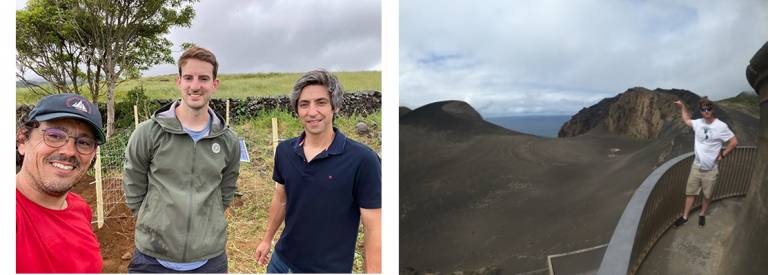
10 brand-new trillium compact seismometers were loaned from SEIS-UK to be installed on the islands of Faial, Pico, São Jorge and Terceira. The job is hypothetically simple:
- dig a hole, bury the seismometer,
- connect it to a digitiser, battery and solar panel,
- check it’s recording properly and then,
- build a fence to keep the cows (and curious humans) out.
However, inevitably there are challenges along the way. Transporting expensive, delicate kit on rough terrain sometimes challenging, digging holes in rocky ground is generally hard work and screwing nuts and bolts with a huge bull staring you down can also be a daunting task.
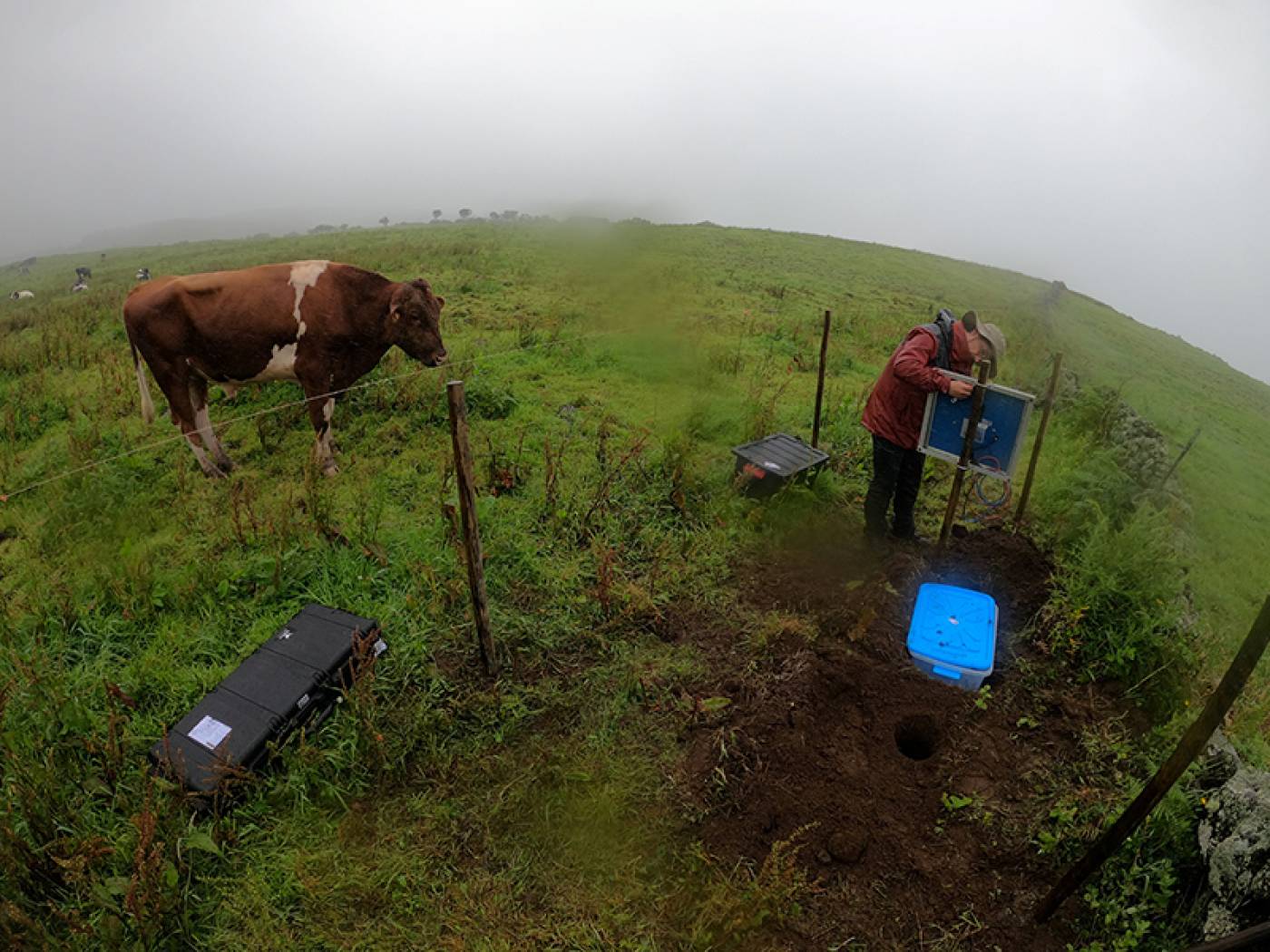
A wet João Fontiela preparing the solar panel with a protective bull behind him (separated by an electric fence)
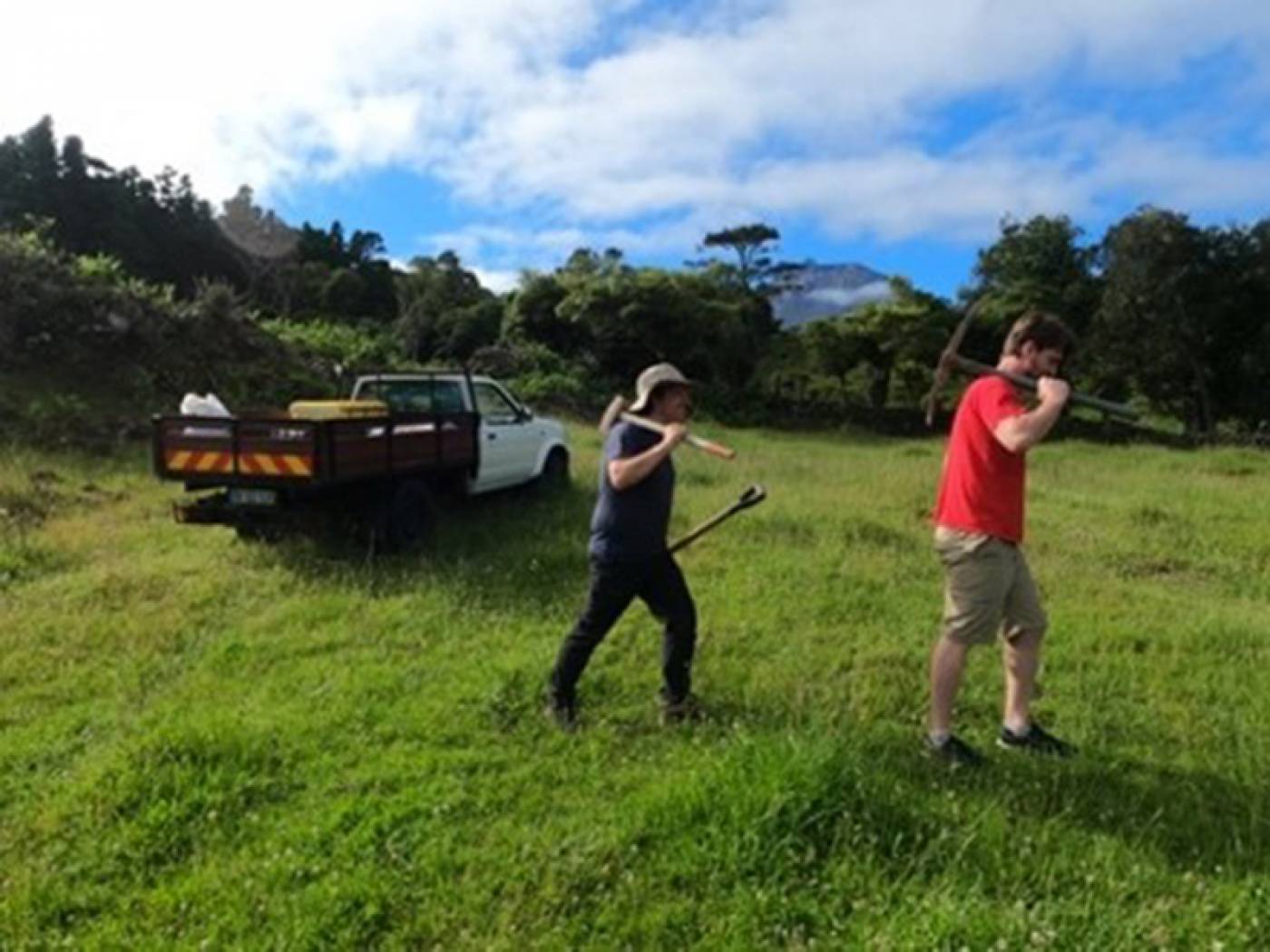
João and Auggie preparing to dig in the foothills of Pico volcano.
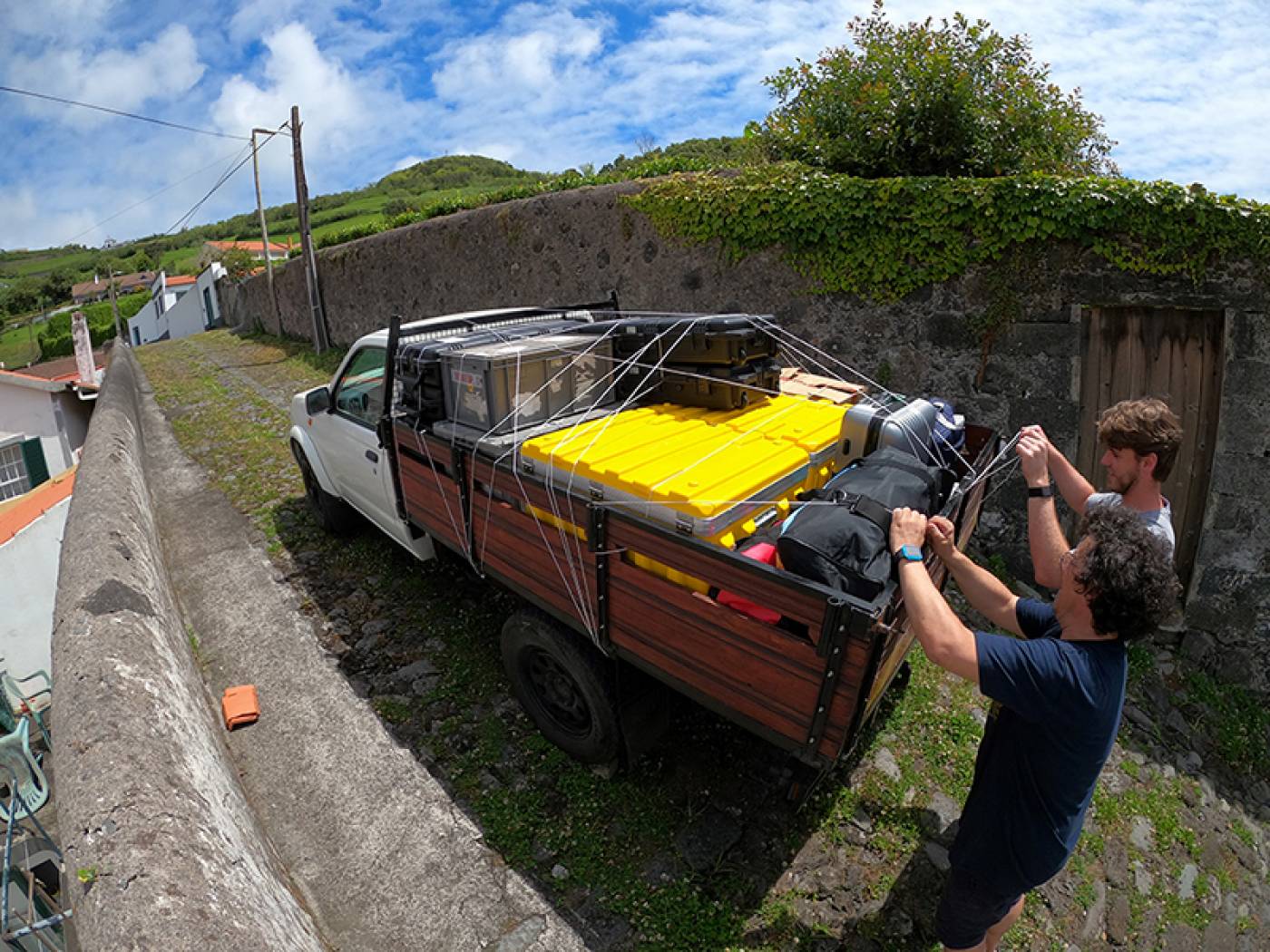
Carefully securing all seismic equipment in the truck.
A real bonus of such a deployment is travelling across the different islands and experiencing their unique characteristics. Our first stop, Horta in Faial, is home to the infamous Peter’s Café Sport bar, the most famous sailor’s bar in the world, where the walls and ceilings are decked with flags of the sailors who have stopped for a gin. A short drive away is the site of the Capelinhos volcano which erupted in 1957, where we highly recommend a trip around the interactive museum.
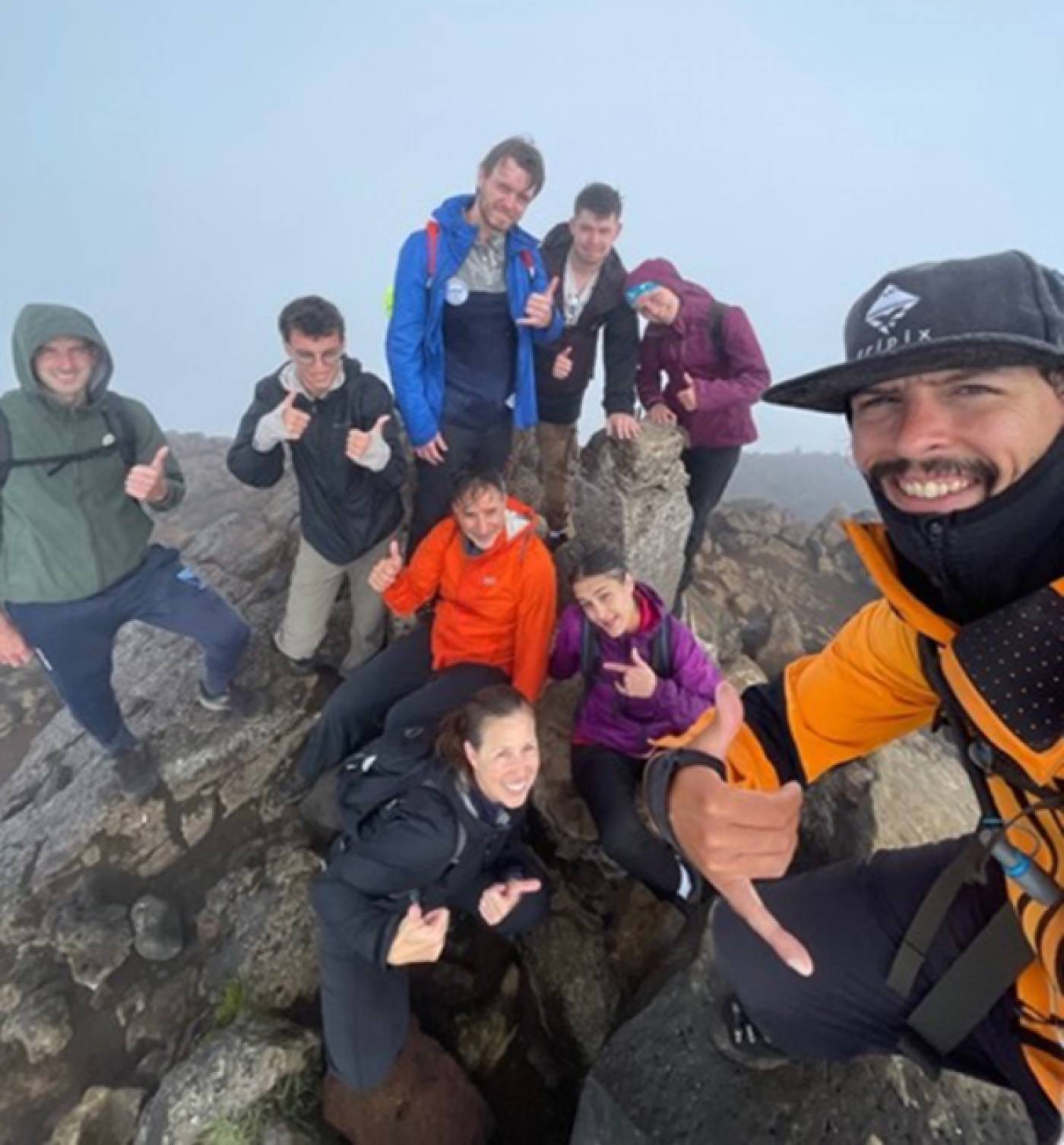
At the summit of a very wet and cloudy Pico volcano
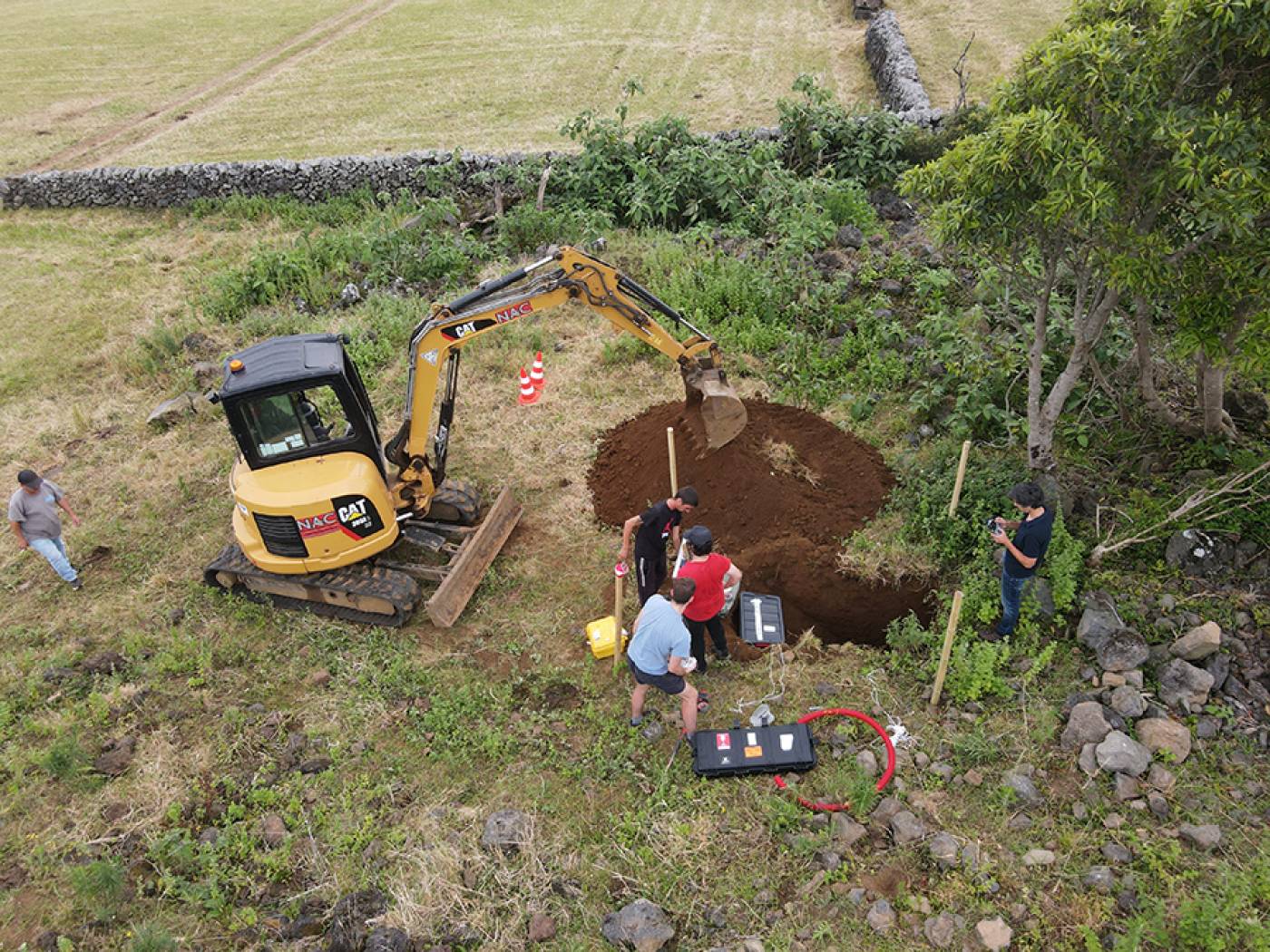
The final installation in Terceira, aided by the big yellow digger!
Next up was Pico island, home to the largest volcano in the Azores (2,351 m elevation), which we hiked at 6am in the pouring rain, with constant thick cloud that blocked any chance of a view. However, some redemption was found during lunch on the summit whilst being heated by fumaroles from below. Sao Jorge was next, home of the seismic swarm but not home to much else, only 8,000 people in fact.
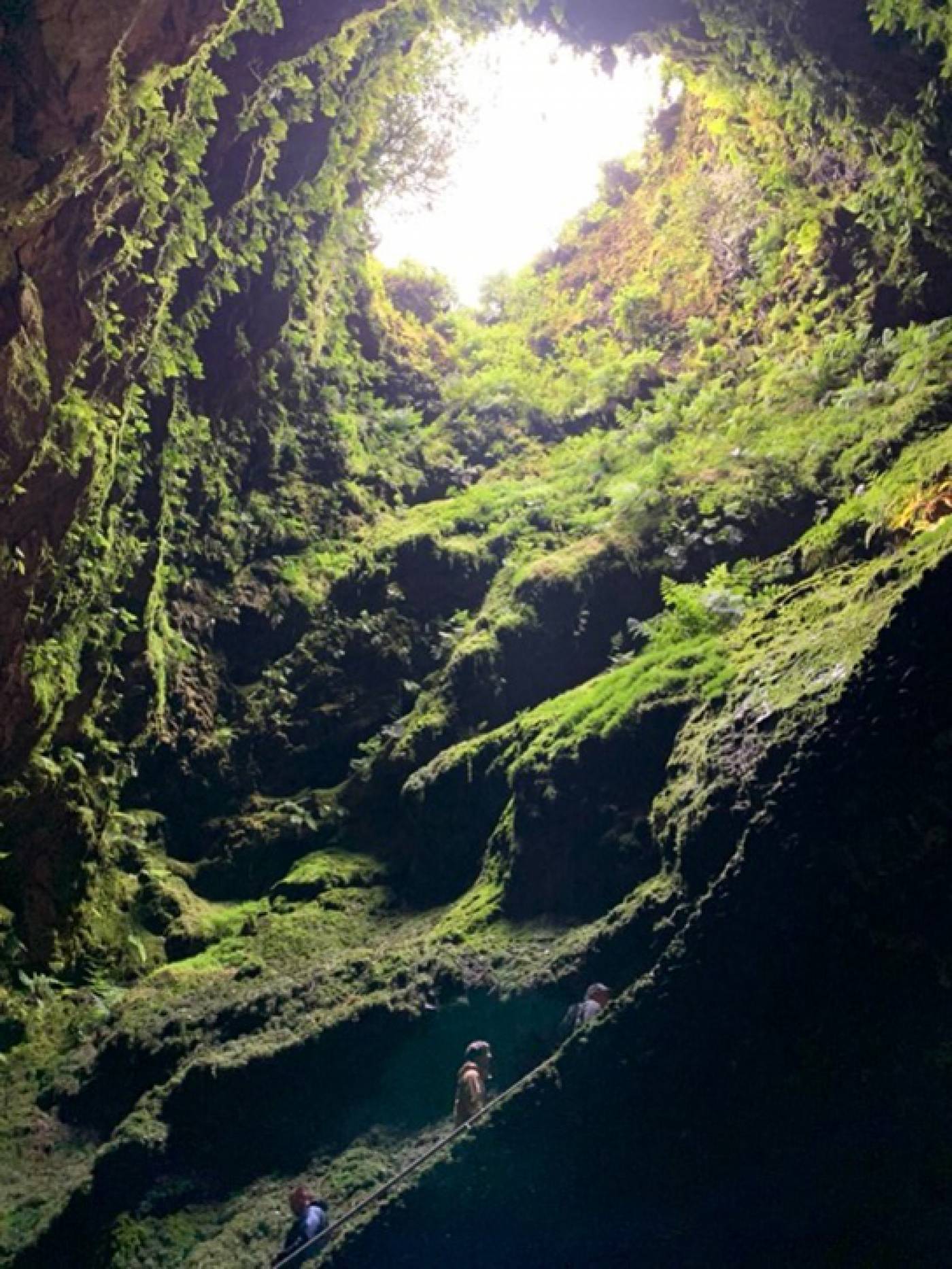
Looking up through the main vent of the Algar do Carvao volcano
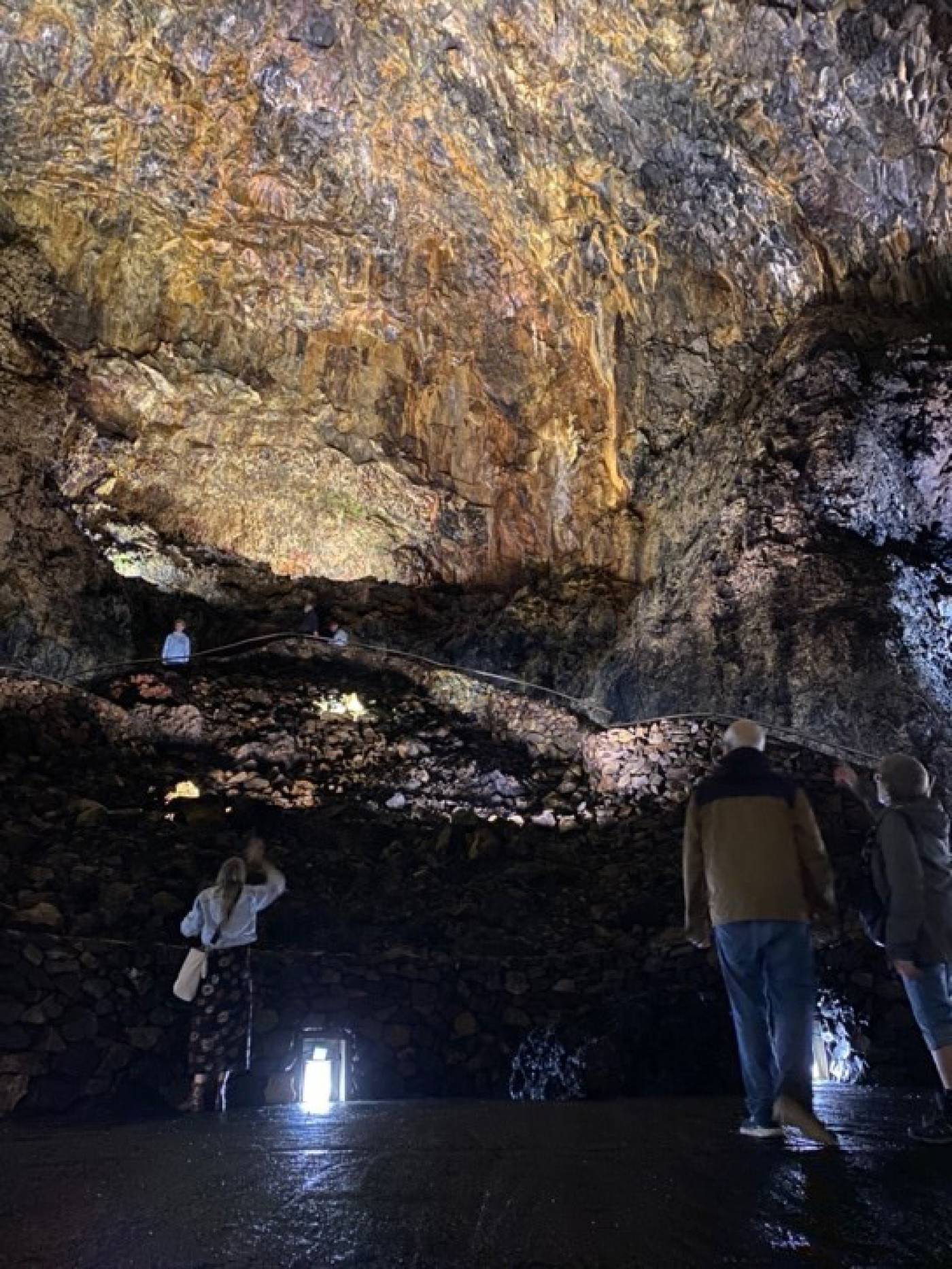
The “cathedral” in the Algar do Carvao volcano, home to music concerts and weddings.
Lastly, we flew to Terceira, the Azores’ second largest island, to install the final station. At this stage energy was low, hands were blistered, and would you believe it, a bright yellow digger appeared from the horizon to dig the deepest hole yet. Expect some preposterously high signal-to-noise ratios from this station! To end the journey, we made a pit-stop at Algar do Carvao volcano, one of the only volcanos in the world where the public can enter inside the magma chamber. It’s also home to a fresh-water lake at the bottom and music concerts are held in the “Cathedral” section, you can even get married there!
The ten seismometers will remain buried until December 2022 constantly recording the Earth’s vibrations. A further 50 seismometers have also been installed on the ocean floor around the Azores, Canaries and Madeira as part of the UPFLOW project. It is hopeful that the results of these deployments, and subsequent analysis of the data will have a positive impact on our understanding of the seismic and volcanic risks in the Azores. Miguel Mendonça, who works for the civil protection unit in Angra do Heroísmo (the capital of Terceira) stated “the tomography models from UPFLOW will allow for more detailed images of the magma chamber [in Terceira], which may allow for the identification of mantle plumes, and all of this helps to understand the volcanic hazard and risk”.
Links:
- Dr William Sturgeon's academic profile
- Prof Ana Ferreira's academic profile
- Auggie Marignier's academic profile
- Scientists record Earth’s ‘pulse’ at the bottom of the ocean
 Close
Close

